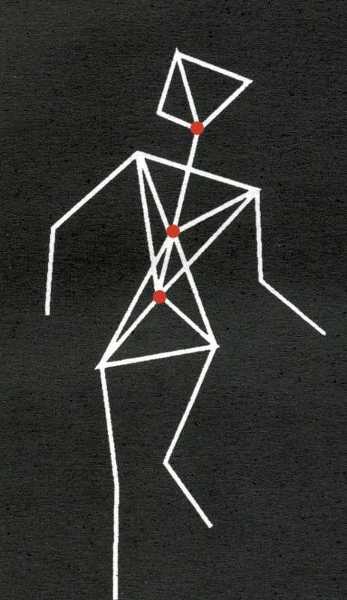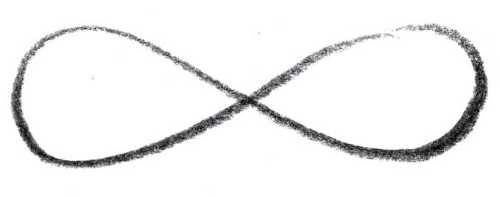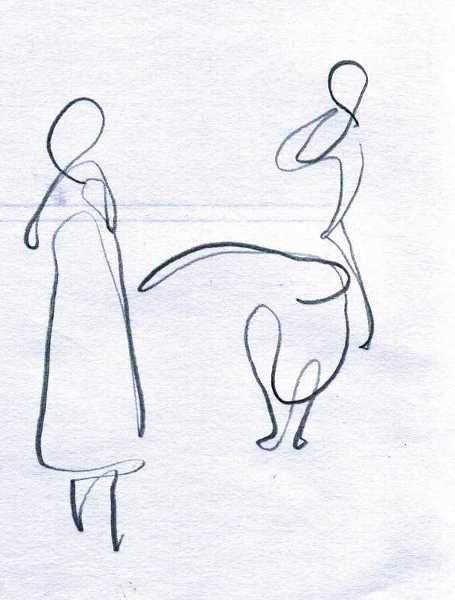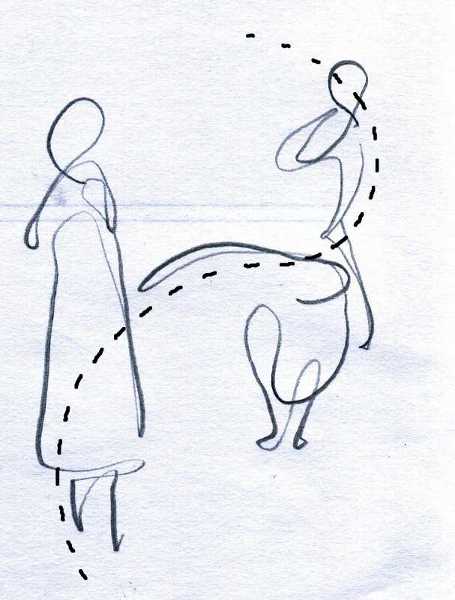Appendix
Working drawings and photos
Foundation work Interviews Science notes for Energies Working drawings and photos

Lisa Roberts, Digital model constructed for Beware of Pedestrians 1995
A digital human form was made for manipulating gestures. Its design was adapted from a model which was developed for use in osteopathy, to observe lines of force as they move through the body (Parsons and Marcer, 2006, Illus.). Lines of force moving through the body are represented by polygons (shapes) and vectors (lines of force). In Osteopathy,
This ability to look and actually see is one of the most important skills ... The looking is not to impose any of these models ... but to see inside the body, to see what pattern it is expressing
Parsons and Marcer, 2006, p. 68
From an osteopathic, biomechanical and anatomical perspective, these points are significant in maintaining structural balance, and are key points for fluid homeostasis within the body (Dawkins, 2010).

Lisa Roberts Drawing of Great Ape Gesture (drawn from Matthews, 2007)
From a video recording, made by arts researcher, John Matthews (2007), I drew the looping gesture of a Great Ape. He seemed to be tracing an 'X' to mark his spot in the sand.

Lisa Roberts Four fundamental trace forms (drawn from Watts, 1977;13): droit (straight), ouvert (opening curve), ronde (closing curve), tortille (twisted)
All these shapes have been observed in the early work of young children; they can be detected in several of the ape drawings; and they occur in the work of adults of primitive cultures. They begin in movement, and these movements form the basis of dance gestures also. So fundamental are they that [Rudolf] Laban (1966) named them 'universal trace forms'.
Elizabeth Watts, Towards art and dance, 1977, p. 13. London: Lepus Books


Lisa Roberts, Osborne dancers Pencil on paper, 2008
Fundamental trace forms can be drawn in the mind's eye, to visualise connections between visual elements. A twisted line was used to visualise connections between the gestures of three dancers. This line was described by Laban as 'Tortille' (Watts, 1977;13).








